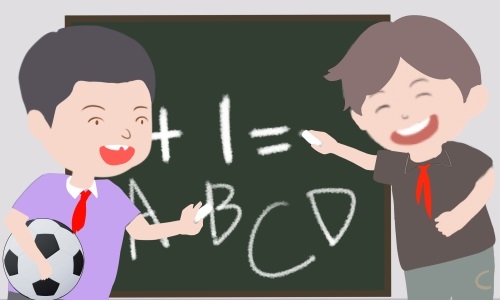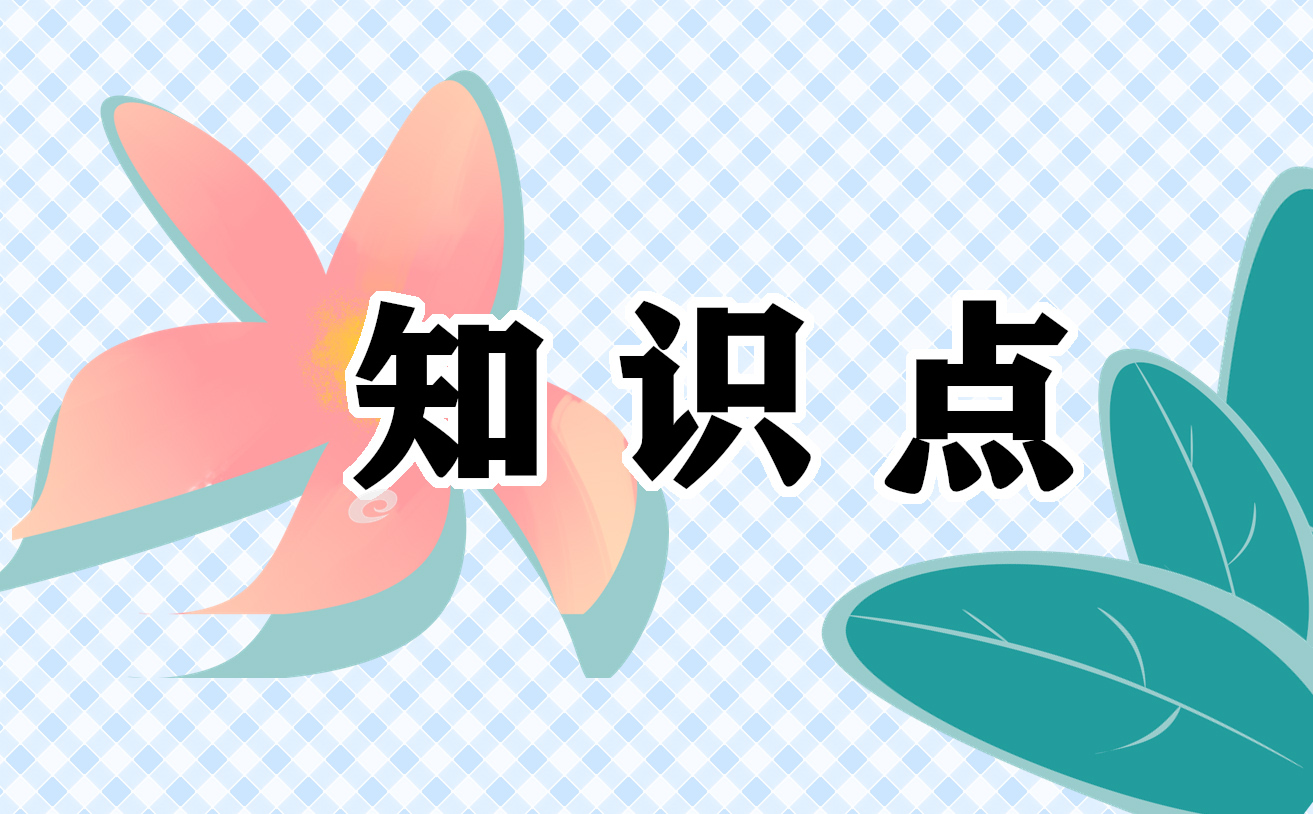精选文章 -->
精选nowadays的用法总结 精选take的用法总结大全 精选master的意思用法总结 精选master的意思用法总结 精选jog的意思用法大全想了解saw的用法么?今天小编给大家带来了saw的用法,希望能够帮助到大家,下面小编就和大家分享,来欣赏一下吧。
saw的用法总结大全
saw的意思
n. 锯,谚语,格言
vt.& vi. 往复移动,锯成,用锯,拉锯
v. 看见( see的过去式),观看,领会,考虑
变形:过去式: sawed; 现在分词:sawing; 过去分词:sawn sawed;
saw用法
saw可以用作动词
saw的基本含义是“锯,锯开”,指用锯在某物上来回移动,可指最终断开,也可指处于来回移动的状态。引申可指“往复移动”。
saw可用作及物动词,也可用作不及物动词。用作及物动词时,后接木头等物质名词作宾语,偶尔还可接双宾语,其间接宾语可转化成介词for的宾语。用作不及物动词时saw的主动形式可以表示被动意义。
saw的过去式为sawed,而过去分词却有两种形式,即sawn和sawed。
saw用作动词的用法例句
They are sawing a log into planks.他们把原木锯成一块块厚板。
She tried to saw off a dead branch from the tree.她试图把那棵树上的一截枯枝锯掉。
The little boy saws on a violin impatiently.那个小男孩不耐烦地拉着小提琴。
saw用法例句
1、I saw her push the boulder down on you.
我看见她将巨石推下砸向你。
2、I saw through your little ruse from the start.
从一开始我就看穿了你的小计谋。
3、I saw her in a towering rage only once.
我只有一次见过她大发雷霆。
英语语法大全——人称代词的用法
人称代词的用法
1)人称代词的主格在句子中作主语或主语补语,例如:
John waited a while but eventually he went home.--约翰等了一会儿,最后他回家了。
John hoped the passenger would be Mary and indeed it was she.--约翰希望那位乘客是玛丽,还真是她。
说明:在复合句中,如果主句和从句主语相同,代词主语要用在从句中,名词主语用在主句中
例如:When he arrived, John went straight to the bank.--约翰一到就直接去银行了。
2)人称代词的宾格在句子中作宾语或介词宾语,但在口语中也能作主语补语,第一人称在省略句中,还可以作主语,例如:
I saw her with them, at least, I thought it was her.--我看到她和他们在一起,至少我认为是她。(her做宾语,them做介词宾语,her做主语补语)
a. -- Who broke the vase?--谁打碎了花瓶?
b. -- Me.--我。(me做主语补语= It's me.)
说明:在上面两例句中,her和me分别作主语补语。现代英语中多用宾格,在正式文体中这里应为she和I。
高中英语语法总结——强调句、It的用法、省略和插入语
01
强调句
(一)强调句句型
1、陈述句的强调句型:It is/ was + 被强调部分(通常是主语、宾语或状语)+ that/ who(当强调主语且主语指人)+ 其它部分。
e.g. It was yesterday that he met Li Ping.
2、一般疑问句的强调句型:同上,只是把is/ was提到it前面。
e.g. Was it yesterday that he met Li Ping?
3、特殊疑问句的强调句型:被强调部分(通常是疑问代词或疑问副词)+ is/ was + it + that/ who + 其它部分?
e.g. When and where was it that you were born?
4、强调句例句:针对I met Li Ming at the railway station yesterday.句子进行强调。
强调主语:It was I that (who) met Li Ming at the railway station yesterday.
强调宾语:It was Li Ming that I met at the railway station yesterday.
强调地点状语:It was at the railway station that I met Li Ming yesterday.
强调时间状语:It was yesterday that I met Li Ming at the railway station.
5、注意:构成强调句的it本身没有词义;强调句中的连接词一般只用that, who,即使在强调时间状语和地点状语时也如此,that, who不可省略;强调句中的时态只用两种,一般现在时和一般过去时。原句谓语动词是一般过去时、过去完成时和过去进行时,用It was … ,其余的时态用It is … 。
(二)not … until … 句型的强调句
1、句型为:It is/ was not until + 被强调部分 + that + 其它部分
e.g. 普通句:He didn’t go to bed until/ till his wife came back.
强调句:It was not until his wife came back that he went to bed.
2、注意:此句型只用until,不用till。但如果不是强调句型,till, until可通用;因为句型中It is/ was not … 已经是否定句了,that后面的从句要用肯定句,切勿再用否定句了。
(三)谓语动词的强调
1、It is/ was … that … 结构不能强调谓语,如果需要强调谓语时,用助动词do/ does或did。
e.g. Do sit down. 务必请坐。
He did write to you last week. 上周他确实给你写了信。
Do be careful when you cross the street. 过马路时,务必(千万)要小心啊!
2、注意:此种强调只用do/ does和did ,没有别的形式;过去时用did ,后面的谓语动词用原形。
02
It的用法
(一)作人称代词
1、it代替前面(或后面)的单数名词或分句等所表示的事物。
e.g. You cannot eat your cake but have it.(it代替前面的cake)
Although we cannot see it, there is air all around us. (it代替后面的air)
They say he has left town, but I don’t believe it. (it代替前面They…town分句中的情况)
2、代替有生命但不能或不必分阴阳性的东西(包括婴儿)。
e.g. Yesterday we saw a big tree. It was fully twenty metres high. (it代替前面的tree)
The baby cried because it was hungry. (it代替前面的baby)
3、在某些习惯说法中,可以代替人。
e.g. ---- Someone is knocking at the door, Peter.
---- Who is it?
---- It’s me.
---- Who are singing?
---- It is the children.
---- The light is still on in the lab. It must be the third-year students doing the experiment.
4、it与one的区别:这两个词都可以代表前面说过的名词,但it用于同名同物的场合;one则用于同名异物的场合。
e.g. ---- Do you still have the bicycle?
---- No, I have sold it.
---- Is this knife yours?
---- No. It is Xiao Zhang’s. Mine is the one on the desk.
5、it与that的区别:两词都可代替某一特定名词,但that指同一类,并非同一个。
e.g. The climate of South China is mild(温和的)
I like it very much.(it指the climate of South China)
The climate of South China is much better than that of Japan.(that指the climate)
(二)作无人称代词
it作无人称代词时,除了句中找不到它所代表的词语外,另一个特点是它后面的内容都是表示天气、时间、距离、度量衡及情况等。
It is fine (rainy, windy, etc.).
It is noon.
It is a half hour’s walk to the factory.
It is eighteen square metres in area.
What does it matter?
(三)作强调词,构成强调结构
用以帮助改变句子结构,使句子的某一成分受到强调。“It is (was) + 所强调的成分 + that (who) + 其它成分。”在这个句型中,it本身没有词义。详见“强调句”。
(四)引导词it作形式主语(宾语)
为了使句子平衡,常采用形式主语(或宾语)it ,而把真正的主语(或宾语)置于句子后面。通常引导词it与它所代替的句子成分中间要夹有某些词。
e.g. It takes half an hour to go there on foot.(It与to go there on foot之间夹有takes half an hour四个词)
We thought it strange that Mr Smith did not come last night. (it与that从句中间夹有 strange)
但有时it与所替代部分之间并不夹有其它词。
e.g. You may depend on it that they will support you.(因为介词on之后一般不直接接that引导的宾语从句。注意:it不是多余的,不能当作错句)
03
省略
为了使讲话和行文简洁,句中某些成分有时可省略。省略可分以下几种情况:
(一)简单句中的省略
1、省略主语:祈使句中主语通常省略。其它省略主语多限于少数现成的说法。
e.g. (I) Thank you for your help.(括号内为省略的词语,下同)
(I’ll) See you tomorrow.
(It) Doesn’t matter.
2、省略主谓语或主谓语的一部分。
e.g. (There is) No smoking.
(Is there) Anything wrong?
Why (do you) not say hello to him?
3、省略作宾语的不定式短语,只保留to。
e.g. ---- Are you going there?
---- I’d like to (go there).
He did not give me the chance, though he had promised to (give me the chance).
注意:如果该宾语是be动词或完成时态,则须在to之后加上be或have。
e.g. ---- Are you an engineer?
---- No, but I want to be.
---- He hasn’t finished the task yet.
---- Well, he ought to have.
4、省略表语。
e.g. ---- Are you thirsty?
---- Yes, I am (thirsty).
5、同时省略几个成分。
e.g. Let’s meet at the same place as (we met) yesterday.
---- Have you finished your work?
---- (I have) Not (finished my work) yet.
(二)并列句中的省略
两个并列分句中,后一个分句常省略与前一分句中相同的部分。
e.g. My father is a doctor and my mother (is) a nurse.
I study at college and my sister (studies) at high school.
(三)主从复合句中的省略
1、主句中有一些成分被省略。
e.g. (I’m) Sorry to hear that you are ill.
(It is a) Pity that he missed such a good chance.
2、省略了一个从句或从句的一部分,用so或not(切不可用it或that)代替。
e.g. ---- Is he coming back tonight?
---- I think so.
---- Is he feeling better today?
---- I’m afraid not.
这种用法常见的有:How so? Why so? Is that so? I hope so. He said so 及I suppose not. I believed not. I hope not等。(但I don’t think so比I think not更常用)。
(四)其它省略
1、连词that的省略
①、宾语从句中常省略连词that,但也有不能省略的情况(参看“名词性从句”等有关部分)。
②、在定语从句中,that在从句中作宾语时可省略。
③、引导主语从句、同位语从句等的连词that一般不可省略。在表语从句中偶尔可省略。
2、不定式符号to的省略
①、并列的不定式可省去后面的to。
e.g. I told him to sit down and wait for a moment.
②、某些使役动词(如let, make, have)及感官动词(如see, watch, notice, hear, feel, look at和listen to等)后面作宾语补足的不定式一定要省去to,但在被动语态中须把to复原。
e.g. ---- I saw the boy fall from the tree.
---- The boy was seen to fall from the tree.
③、介词but前若有动词do,后面的不定式不带to。
e.g. The boy did nothing but play.
3、在某些状语从句中,从句的主语与主句主语一致时,可省去“主语 + be”部分。(参看“状语从句”有关部分)
4、连词if在部分虚拟条件句中可省略,但后面的语序有变化(参见“倒装句”有关部分)
5、主句与从句各有一些成分省略。
e.g. The sooner (you do it), the better (it will be).
04
插入语
英语句子中(尤其在口语中)常插入一些单词、短语或者句子,用来补充某些含义。语法上称他们为“插入语”。
(一)插入语的类型
1、单词(多是副词),如:besides, however, otherwise, therefore, though等。
e.g. She is looking fit, though. 他看起来倒是健康。
I can, however, discuss this when I see you.
2、短语
e.g. China and India, for example, are neighbours.
By the way, where are you from?
3、句子
e.g. He is an honest man, I believe.
Jack, as far as I know, isn’t clever.
(二)插入语的位置
通常插入语位于句中,并用逗号隔开。但有时,也可位于句首或句末(见上面例句)。也有时,并不用逗号隔开。
e.g. You know that I think you are wrong. 我认为,你明白你错了。
What on earth do you mean? 你究竟是什么意思?
(三)插入语在句中的作用
一般来说,插入语在句中不起主要作用。如果把插入语抽去,句子的含义不大受影响。但是,有的插入语却是句子不可缺少的一部分。
e.g. He got the news from nobody knows where. 他这消息谁也不知道是从哪儿得来的。
(四)插入语的特殊用法
下面这种复杂的特殊疑问句,也可认为包含有“插入语”。这种疑问句(有的语法书也称为“混合疑问句”或“连锁疑问句”)常用来征询对方对某一疑问点的看法、判断、认识、猜度或请求对方重复一遍说过的话。口语中出现频率极高。常用动词有say, suppose, guess, believe, consider, think, imagine 等。
e.g. How long did you say she would stay here?
When do you suppose they’ll be back?
How old did you think she was
(五)大纲中要求掌握的常用作插入语的词语
by the way 顺便说,顺便问一下
so far 到目前为止
and so on 等等
on the contrary 相反
no wonder 不足为奇
as a matter of fact 事实上
come along 快点,来吧
in other words 换句话说
as usual 如同以往
as a result 因此,结果
saw的用法总结大全相关文章:
★ 最新年终总结范文大全
★ 个人工作总结范文大全
★ 部队工作总结最新
★ 万能个人工作总结
★ 月底工作总结5篇
★ 食物中毒的总结大全
★ 部队工作总结模板
★ 简短的个人工作总结大全
★ 月底工作总结范本
★ 大学期末总结大全5篇
上一篇:Sunday的用法总结大全
下一篇:talk的用法总结大全




